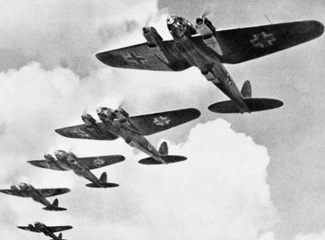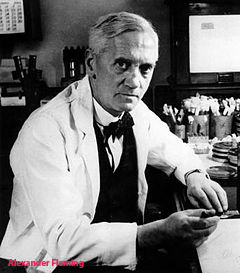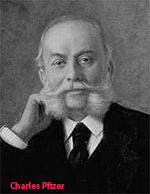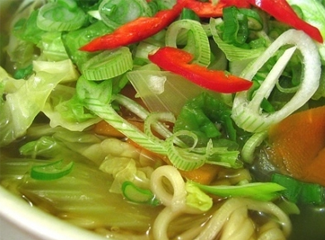How Penicillin and Cabbage Soup Helped Win WWII and Save Democracy
This is the true story of how the Battle of Britain was won, how penicillin was discovered, how the largest pharmaceutical company in the world got its start-and how democracy was saved.

Let us return to 1940, during the darkest days of the British empire. Nazi Germany has conquered France in a surprisingly few weeks, and already controls much of Europe. Hitler has turned his attention to England. The Luftwaffe believes it can gain air superiority over England-it has more and better planes, more experienced pilots, more confidence. German pilots have been shooting down lots of British planes. But British planes are also shooting down German plans: German pilots who survive the downing of their aircraft are being captured and held prisoner for the duration of the war.
The British pilots are fighting in the skies over their own homeland. They are treated as semi-deities by an admiring public.
The British pilots who live through their plane’s destruction are often badly burned. It usually takes many weeks for these young men to recover-mainly because their wounds are infected and healing is slow. And as the fighting continues, the number of British pilots has fallen to a dangerously low level.
The Germans are winning the battle of Britain!
Flashback to 1929. . . . A brilliant-but untidy-Scottish scientist named Alexander Fleming went on vacation and left his laboratory a mess. He had failed to clean some petri dishes before he left: some bacteria were alive and growing in these dishes. A few weeks later when Fleming returned to his lab, he noted that these bacteria were dead in a clear area around a contaminating fungus. That fungus was a member of the genus Penicillium.

Fleming did more experiments and realized that whenever the Penicillium mold grew, the nearby dangerous bacteria were soon killed. Tiny amounts of the fungus were very potent in their destruction of the previously potent bacteria. Fleming named the antibiotic he extracted from the mold culture penicillin. Fleming got to work. He began to grow penicillin in glass bottles, but the process was slow and exacting. Dr Fleming was determined, and soon he developed a liquid form of the mold that he could inject into animals. Eventually a pill form was developed.
Fleming found that nothing had been published about penicillin, so he began writing an article about his findings. He did not get much credit for his work. His article was published and mostly ignored.1 In 1929, the depression was getting just getting under way.
Back to 1940 and the Battle of Britain. . . . Someone rediscovered Fleming’s article and grew some penicillin to use in the infected wounds of the burned British pilots. The pilots’ wounds healed miraculously and the young men were able to rejoin the battle-sometimes within a week of being shot down!
But penicillin was hard to come by. The mold could only be grown in glass bottles. And even the largest bottles produced only a small amount of the mold.
The British doctors recognized that penicillin was excreted unchanged in the urine, so they came up with an ingenious way of re-using the penicillin. They collected the pilots’ urine and recrystalized the penicillin out of it: they then re-administered the penicillin to the next wounded guy.
But this method wasn’t efficient (or aesthetically pleasing), so scientists decided to produce the penicillin in bigger bottles. But even the biggest bottles available were inadequate to keep up with the rapidly increasing demands. Pilots who fell into the cold English Channel often came down with pneumonia. Penicillin, the wonder drug, would convert these critically ill flyers with abnormal x-rays back into young men who would try to date their nurses. Talk about a rapid recovery!
Bigger bottles were needed, but because of the war, they were not available in Britain. So the Brits went to America to buy the biggest bottles made: 5-gallon bottles. At that time, few individuals or industries used such big jugs.

When the Brits arrived in New York City, they looked for manufacturers of these rare and unprofitable bottles, for which demand was minute.
Their search ended with a chemist from Brooklyn. His name was Charles Pfizer. Charlie had been using a fungal method to produce citric acid in 50,000-gallon tanks. Poor housewives used his citric acid as a seasoning in their cabbage soup-a delicious peasant food made from sour salt (citric acid), a major ingredient that was originally extracted from expensive lemons. Charlie had figured out how to make the citric acid inexpensively and profitably for his company. Charlie and the housewives were all happy.
Charlie told the Brits he would produce the penicillin in Brooklyn. He already knew how to train a fungus to grow in very large tanks . . . he could start penicillin production quickly and could produce enough volume to satisfy the needs of the British doctors and the Royal Air Force. The British were overjoyed. There would now be plenty of penicillin for the RAF.

With many wounded British pilots quickly back in action, Hermann Goring could not understand where they were all coming from. He believed that most pilots who had been shot down were permanently out of the war.
Before the winter of 1940, the British won the Battle of Britain. Democracy was saved, thanks in good measure to penicillin. Alex and Charles both did very well. And every one of us has benefitted from their work.
Alex Fleming won the Nobel prize.
Charles Pfizer’s little chemical company became the world’s largest pharmaceutical company. In more recent times, Pfizer developed Lipitor, which became the largest-selling single prescription drug in the world.
Neither the Germans nor the Russians, who had massive chemical industries and who had been preparing for war since the 1930’s, discovered the process for making penicillin.
Perhaps there is something special about a capitalistic democratic society?
Reference
1. Fleming A. On the antibacterial action of cultures of a Penicillium, with special reference to their use in the isolation of B. influenzae. Br J Exp Pathol. 1929;10:226-236.